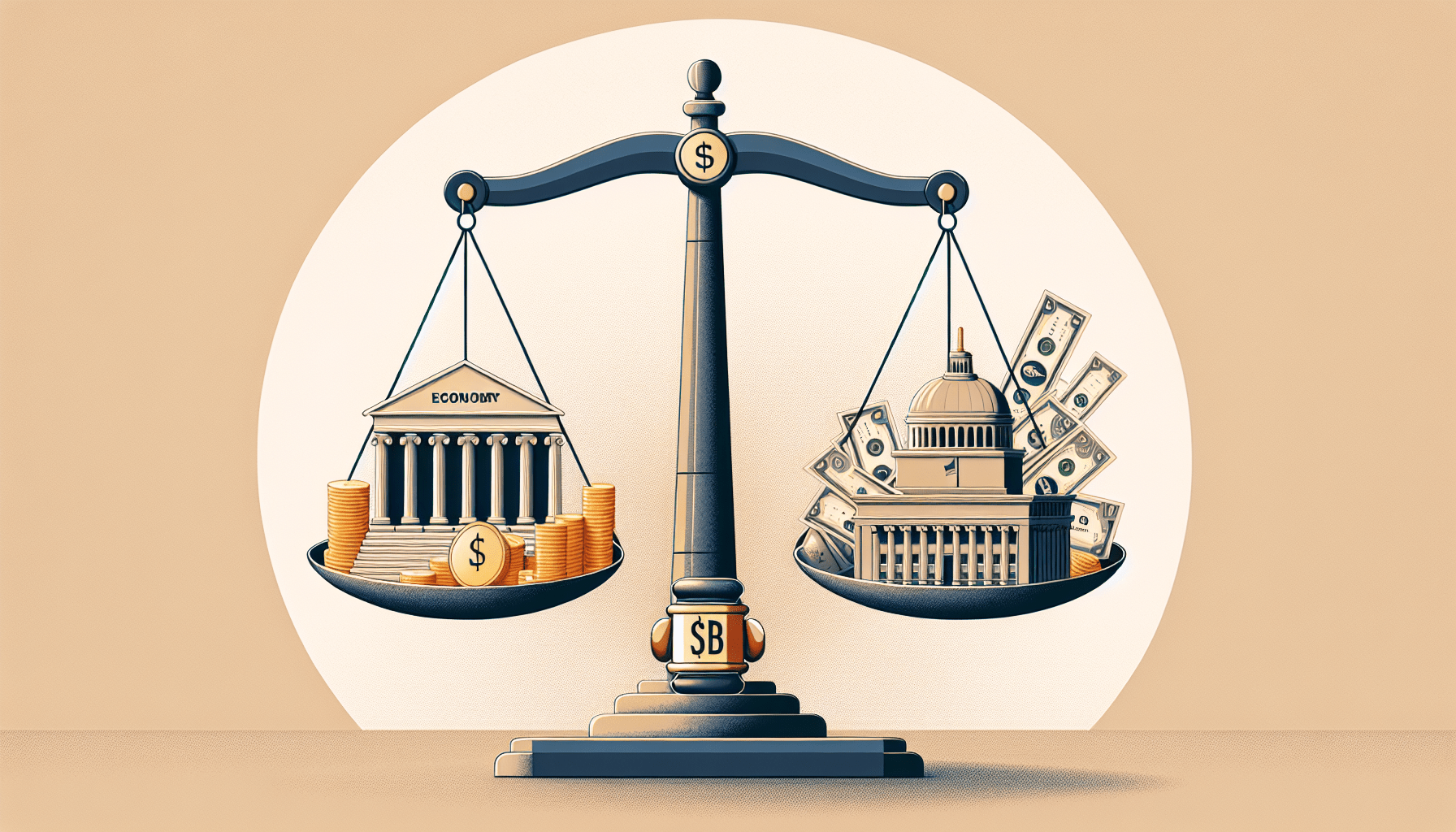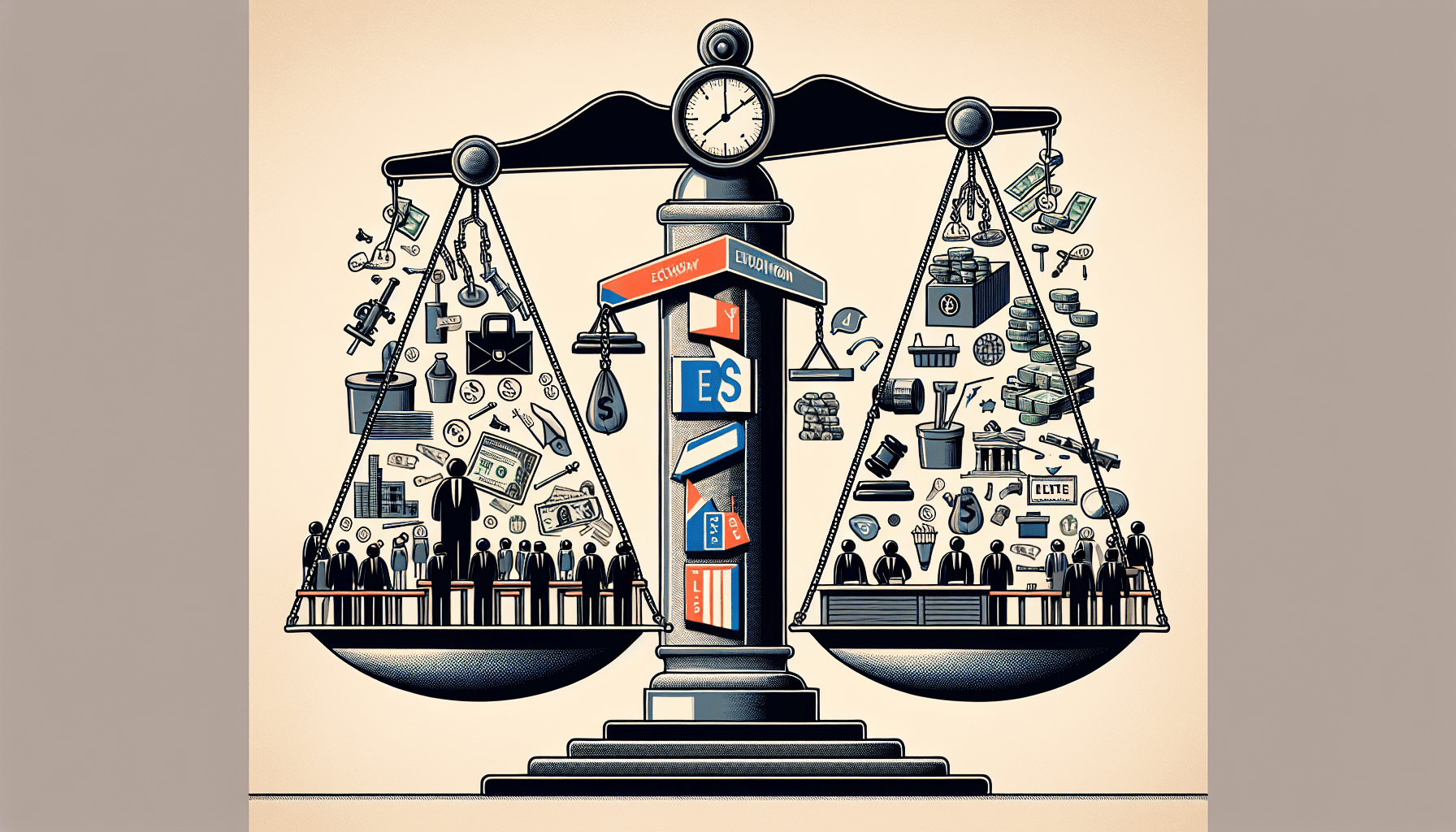In the world of politics, one topic that often takes center stage and sparks heated debates is the US national debt. As citizens, it’s crucial to understand the role that this staggering debt plays in political discourse. From policy decisions to campaign promises, the national debt has a significant impact on the direction our country moves towards. By exploring the intricacies of this complex issue, we can gain a clearer picture of how it influences political discussions and shapes our nation’s future.
Understanding the Concept of National Debt
Definition of national debt
National debt refers to the total amount of money that a government owes to its creditors. It represents the cumulative accumulation of budget deficits over time. The national debt is typically measured in terms of the outstanding amount of government bonds and other forms of debt that have been issued to finance government spending.
How the national debt grows
The national debt grows through the issuance of government bonds and borrowing from domestic and foreign investors. When a government runs a budget deficit, meaning that its spending exceeds its revenues, it must borrow to cover the shortfall. This borrowing increases the national debt. Interest payments on the debt further contribute to its growth.
Implications of a growing national debt
A growing national debt has various implications for the economy and the country as a whole. First, it puts upward pressure on interest rates, making it more expensive for businesses and individuals to borrow money. It can also lead to inflation if the government seeks to finance the debt through money creation. Additionally, a large national debt can lead to a loss of confidence in the country’s financial stability, both domestically and internationally.
The Historical Context of the US National Debt
The origins of the US national debt
The US national debt traces its origins back to the Revolutionary War, when the newly formed United States government borrowed money from foreign countries and individuals to finance the war effort. Since then, the national debt has fluctuated, increasing during times of war and economic recession, and decreasing during periods of economic prosperity.
Major periods of national debt growth
Several major periods of national debt growth have shaped the history of the United States. One such period was during the Civil War, when the government issued bonds to fund the war effort. The World Wars and the Great Depression also led to significant increases in the national debt as the government embarked on massive spending programs to stimulate the economy and support the war efforts.
The national debt today
Today, the US national debt stands at an unprecedented level, surpassing $28 trillion. The debt has continued to grow rapidly in recent years due to factors such as increased government spending, tax cuts, and the economic impact of the COVID-19 pandemic. The size of the national debt has become a pressing concern for policymakers, with debates revolving around how to address the issue and ensure long-term fiscal sustainability.

National Debt and Economic Policy
The impact of country’s debt on its economy
A country’s debt level can have significant implications for its economic health. High levels of debt can crowd out private investment, as the government competes with businesses for available funds, leading to slower economic growth. It can also limit the government’s ability to respond to economic downturns, as increased debt servicing costs reduce the funds available for fiscal stimulus.
The relationship between fiscal policy and national debt
Fiscal policy, including government spending and taxation, plays a crucial role in shaping the national debt. Expansionary fiscal policies, such as increased government spending or tax cuts, can lead to higher deficits and a growing national debt. Conversely, contractionary fiscal policies aimed at reducing the deficit can help stabilize or decrease the national debt.
Differences in approach to the national debt by different political parties
Different political parties often have differing views on how to address the national debt. Generally, conservative parties tend to prioritize fiscal discipline and advocate for reducing government spending to decrease the national debt. On the other hand, progressive parties may emphasize the need for increased government investment and stimulus, accepting higher levels of debt as a means to promote economic growth and address social issues.
The National Debt as a Political Tool
The use of the national debt in political campaigns
The national debt is often used as a political tool during election campaigns. Candidates frequently highlight the size of the debt as evidence of their opponents’ fiscal irresponsibility. They may use slogans and soundbites to convey their commitment to reducing or managing the national debt, appealing to voters’ concerns about the long-term economic stability and future generations’ burden.
National debt as a means of critiquing political opponents
Critiquing the national debt is a common tactic employed by politicians to undermine their opponents. They may argue that excessive government spending and mismanagement are responsible for the growing debt, painting their opponents as fiscally irresponsible or lacking economic competence. This critique aims to sway public opinion and cast doubt on the opposing party’s ability to manage the country’s finances effectively.
Long-term political strategies related to the national debt
Political parties and policymakers often develop long-term strategies regarding the national debt. These strategies may involve setting goals for debt reduction, identifying specific policy measures to achieve those goals, and rallying public support for their proposed approach. These long-term strategies aim to not only address the immediate debt concerns but also shape the direction of the country’s fiscal policies for years to come.

National Debt and Public Opinion
Public perception of the national debt
Public perception of the national debt can vary depending on factors such as individual economic circumstances, political affiliations, and media influence. Some individuals may view a large national debt as a significant concern, fearing its potential impact on future generations and the overall stability of the economy. Others may prioritize immediate needs and view the debt as a necessary measure to address pressing social issues.
The role of media in shaping public opinion on the national debt
Media outlets play a crucial role in shaping public opinion on the national debt. The way the national debt is portrayed in news reports, editorials, and opinion pieces can influence how the public perceives its magnitude and urgency. Media coverage often highlights the partisan disagreements surrounding the national debt, further framing the issue in terms of political ideologies and party affiliation.
Changing attitudes towards the national debt over time
Attitudes towards the national debt have shifted over time. In times of crisis or recession, there tends to be greater acceptance of higher levels of debt as a necessary measure to stimulate the economy or provide essential services. However, during periods of economic stability and prosperity, concerns about the national debt may gain more prominence, as individuals focus on long-term fiscal sustainability and future economic uncertainties.
Influence of National Debt on Legislative Priorities
Budgetary choices influenced by the debt level
The national debt level significantly influences legislative priorities and budgetary choices. High levels of debt may necessitate cuts to certain government programs or services to reduce spending and address the debt burden. Conversely, lower levels of debt provide more flexibility in allocating funds towards various priorities, such as infrastructure investment, education, healthcare, or defense.
Debt-reduction policies and measures
Debt-reduction policies and measures are often discussed and implemented to address the national debt. These can include measures such as reducing government spending, increasing taxes, implementing fiscal controls, and promoting economic growth. However, the effectiveness and feasibility of these policies can be subject to political debates and differing economic perspectives.
Conflicts over national debt policy
Conflicts over national debt policy are common among policymakers with different ideologies and priorities. Some may argue for immediate debt reduction through austerity measures, while others may advocate for a more gradual approach or prioritize economic stimulus. These conflicts can lead to political gridlock and compromise, as policymakers negotiate and seek common ground on how to address the national debt while balancing other societal needs and priorities.

National Debt and the Global Economy
How the US national debt affects international relationships
The US national debt has implications for international relationships and global economic dynamics. As the largest economy in the world, the US plays a crucial role in global financial markets. High levels of US debt can create concerns among foreign investors and creditors, potentially leading to fluctuations in exchange rates and interest rates. The US government’s ability to service its debt also impacts its credibility and influence on the international stage.
The role of the US national debt in global financial markets
The US national debt serves as a benchmark and safe haven for financial markets worldwide. US Treasury bonds are considered a low-risk investment option, and their yields affect interest rates globally. Changes in the perceived creditworthiness of the US government or shifts in investor sentiment towards US debt can have ripple effects throughout the global financial system and impact other countries’ borrowing costs.
Comparisons of the US national debt with other countries
When comparing the US national debt with other countries, several factors must be considered, such as the size of the economy, population, and overall fiscal situation. While the absolute value of the US debt is substantial, the debt-to-GDP ratio provides a more meaningful comparison. Based on this ratio, other countries may have higher levels of debt relative to their economic output. However, each country’s unique circumstances and fiscal policies must be taken into account when making such comparisons.
National Debt in Domestic Policy
The impact of national debt on social services
The national debt can have implications for domestic policy and the funding of social services. High levels of debt may put pressure on the government to cut spending in areas such as education, healthcare, or social welfare programs. This can have consequences for individuals and communities that depend on these services, leading to debates about the trade-offs between debt reduction and meeting societal needs.
National debt and the funding of public initiatives
The national debt influences the availability of funding for public initiatives and projects. High levels of debt may limit the government’s ability to invest in infrastructure, research and development, or other areas that require substantial financial resources. These funding constraints can impact economic growth, innovation, and the overall competitiveness of the country.
Budget allocation and national debt considerations
National debt considerations play a role in the budget allocation process. When deciding on budget priorities, policymakers must take into account the debt level and its implications for future interest payments and debt servicing costs. This can lead to difficult choices and trade-offs between competing priorities, as policymakers strive to address the national debt while meeting the needs of various stakeholders and constituents.

National Debt in Election Campaigns
Candidates’ perspectives on national debt
Candidates in election campaigns often have differing perspectives on the national debt. Some may prioritize debt reduction, highlighting the need for fiscal responsibility and a balanced budget. Others may advocate for increased government spending to address social issues or stimulate the economy, accepting higher levels of debt as a means to achieve those goals. Candidates’ views on the national debt can reflect their political ideologies and policy priorities.
Role of campaign promises related to national debt
Campaign promises related to the national debt can play a significant role in political campaigns. Candidates may pledge to reduce the debt, implement specific debt-reduction measures, or prioritize certain spending areas. These promises aim to attract voters concerned about the long-term fiscal health of the country and demonstrate the candidate’s commitment to responsible governance.
Voters’ response to election campaigns focusing on national debt
Voters’ response to election campaigns focusing on the national debt can vary. Some voters may view a candidate’s commitment to debt reduction positively, valuing fiscal responsibility and long-term economic stability. Others may prioritize other issues, such as job creation or social programs, and view debt reduction as a lower priority. Ultimately, voters’ responses depend on their individual priorities and beliefs about the role of government in managing the national debt.
National Debt and Future Discussions
Projected national debt in the future
The projected national debt in the future depends on a variety of factors, including economic growth, fiscal policies, and demographic trends. Without significant changes to current fiscal practices, the national debt is expected to continue growing. The ongoing debate on how to address the national debt and ensure fiscal sustainability will shape the trajectory of future debt levels.
Emerging viewpoints on the national debt
Emerging viewpoints on the national debt include a range of perspectives. Some argue for a more progressive approach, advocating for increased government investment and worrying less about debt levels. Others emphasize the need for fiscal discipline and debt reduction to safeguard future economic stability. The emergence of new economic theories and changing societal attitudes towards debt contribute to the evolution of viewpoints on the national debt.
Potential shifts in the political discourse surrounding national debt
The political discourse surrounding the national debt may experience shifts over time as new challenges and priorities emerge. Economic crises, geopolitical events, or changes in public opinion can influence the narrative around the national debt. Shifting demographics and generational differences may also shape the discourse, as younger generations form their attitudes towards the national debt and become more politically engaged. The future political discourse on the national debt will likely reflect these dynamic factors and evolving public sentiment.

